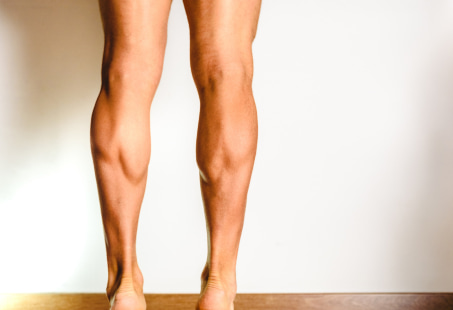Calf implants are silicone-filled prosthetic devices that are used for the augmentation of the calves – the back portion of the lower legs. Whether it’s due to genetics, low body weight, injury or congenital deformity, some people feel dissatisfied with the overall shape and appearance of their calves. However, with these implants, it’s possible to add a greater curvature to that area and make it look more muscular and shapelier.
But just like any surgery, calf augmentation with implants carries certain risks, which can be quite serious. Many people also ask whether or not it’s safe to have this procedure in the first place. In this guide, you’ll learn more about calf enlargement surgery with implants, who might consider getting this surgery, how long its results last, what the recovery time is and, importantly, how much can it all cost you.
What Is A Calf Implant?
A calf implant is an artificial prosthetic device, either filled with silicone gel or solid silicone, that comes in different ready-made shapes and sizes or can be custom-made to be fitted into the calves. It’s important to note that calf implants are used for augmentation surgery in both men and women.
According to the American Society for Aesthetic Plastic Surgery (ASAPS), solid silicone implants, owing to their “soft and flexible” material, feel quite natural. They also don’t leak because they’re not filled with a gel. Moreover, they can be carved according to your needs.
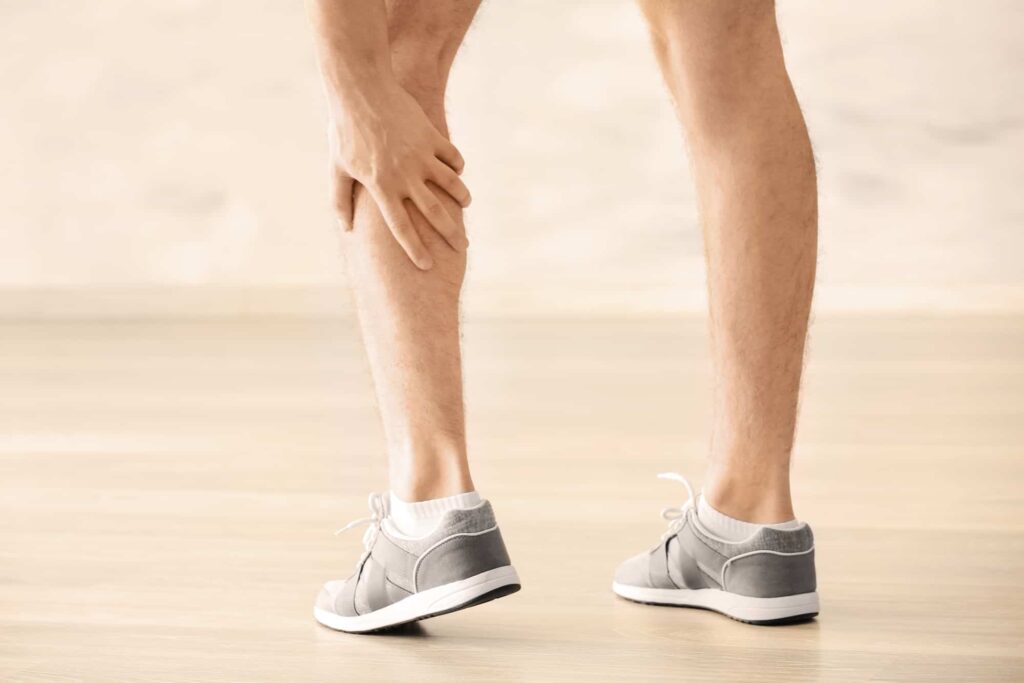
But the silicone gel implants are still quite popularly used as well. As per the ASAPS, they might be preferred by bodybuilders looking for a more pronounced volume enhancement for their calves. Besides leakage, however, capsular contracture is reported as another risk of such implants, although it is rare.
How Are Calf Implants Done?
Before you have a calf implant surgery, you’ll have a consultation session with your plastic surgeon, where you’ll discuss your aesthetic goals with them. To make sure that both you and your surgeon are on the same page, you’ll probably be given premade sample sizers that you can fit into your socks to decide on the best calf implant size for you.

Keep in mind that your anatomy will also be taken into consideration in this regard. For instance, the type of implant will have to be adjusted according to how tight your muscle is.
On the day of the surgery, you’ll either be given general or local anaesthesia. Following that, an incision is made at the back of the leg for the insertion of the implants, which might be done in the following ways:
- Submuscular augmentation – It’s when the implant is placed underneath the calf muscle in a pocket that’s created.
- Subfascial augmentation – It’s when the implant is placed underneath the fascia – a connective tissue covering holding organs in place.
Depending on the needs of the patient, a single implant may be placed per leg or even two. It’s also possible for the surgeon to place two implants in one leg and then a single one in the other.
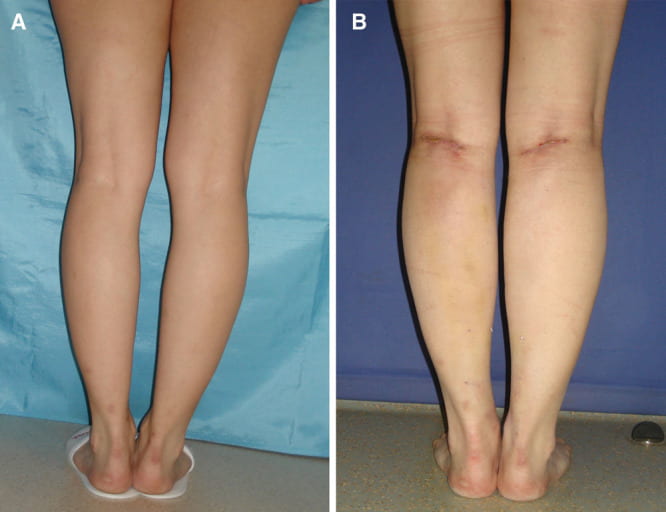
Generally, the entire procedure can take around 1-1.5 hours. You might be fitted with temporary drains after the procedure as well to minimise the risk of fluid build-up (seroma). Compression bandages are also wrapped around the legs.
Why Are Calf Implants Done?
People choose to have calf enlargement with implants for a number of reasons, such as:
- Make the calves look more bulky and defined if you’re not able to achieve the same look through diet and exercise.
- You have thin or weak calves either naturally or due to an injury or health condition, such as polio, club foot, spina bifida, bowed legs, etc., and are self-conscious of how your lower legs appear.
- You want to masculinise the leg as a part of your gender-affirmation surgery.
- Your calves are asymmetrical, one bigger or smaller than the other and/or out of proportion with the rest of your body.
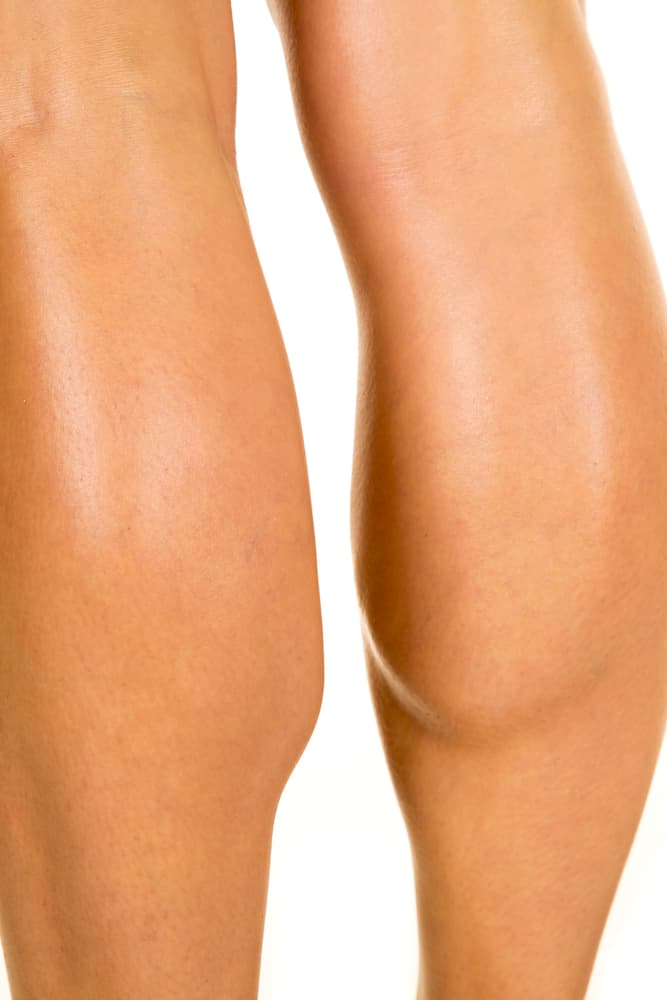
It should, however, be noted that not everyone is a suitable candidate for calf implants’ surgery. For instance, your surgeon might advise against the procedure if you have a blood circulation issue or very unrealistic expectations regarding what you can achieve, considering your anatomy and/or medical history.
Who Prefers Calf Implants?
It’s important to note that calf enhancement can be achieved through means other than implants. For instance, it’s possible to increase the size of the calves through fat transfer. Fat can be harvested from other areas of the body, such as the abdomen or thighs, where it might be in excess and then cleaned and processed for the calves.
However, there are a few reasons why some people might prefer calf implants over calf fat transfer. For one, with implants, you might be able to achieve a more dramatic transformation, whereas with fat, the outcome might be limited by the amount of preexisting fat you have in your body. In the case of the latter, it also cannot be predicted how much fat will be absorbed by the body, so the results might not remain the same with time.
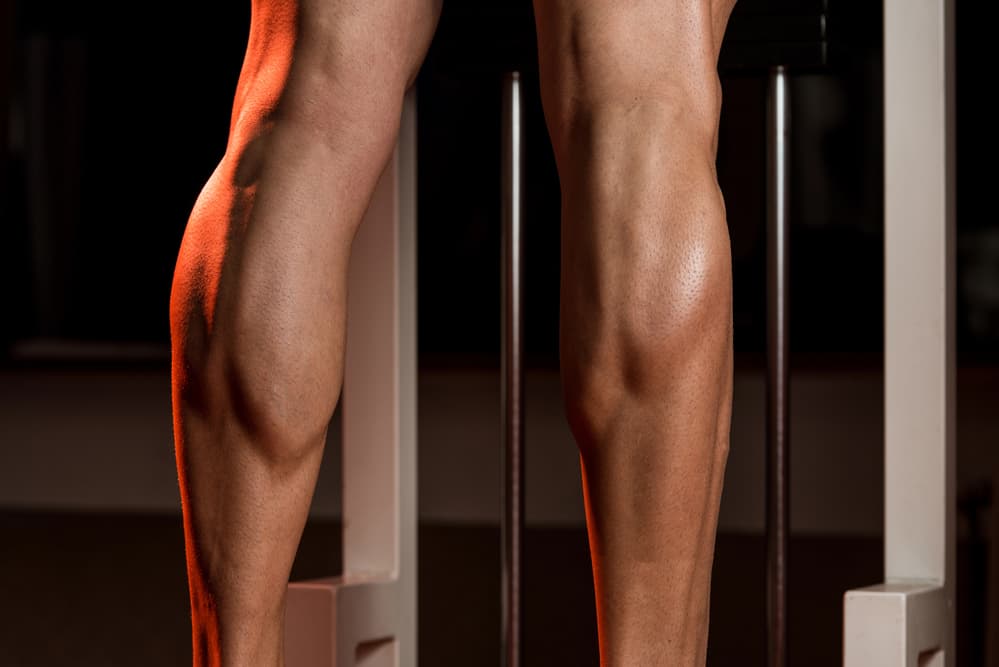
According to a study published in Aesthetic Plastic Surgery, while fat grafting has the lowest complication rate, another issue with it is that you might need multiple sessions of this procedure.
Implants, on the other hand, can come with risks, such as rupture, capsular contracture, and change in position, but they still have a low complication rate and a high satisfaction rate. Still, your surgeon might recommend combining both, especially if the implant needs some extra padding around it to hide the edges.
How Long Do Calf Implants Last?
Calves’ implants are meant to last a lifetime. These are permanent devices, so they’ll stay in place unless you want to or there’s a need to remove them. Some patients might want to replace their implants if they want to change their size. In case of complications too, such as:
- Compartment syndrome – dangerous build-up of pressure within muscles
- Extrusion – when the implant pokes through the skin and fails to stay in place
- Malposition – when the implant changes position, abnormally affecting the overall appearance of the calf.
- Rupture – if the implant is torn, it will have to be removed and if desired and possible, replaced with a new one.
- Capsular contracture – like in breast implants, scar tissue can form around the calf implant.
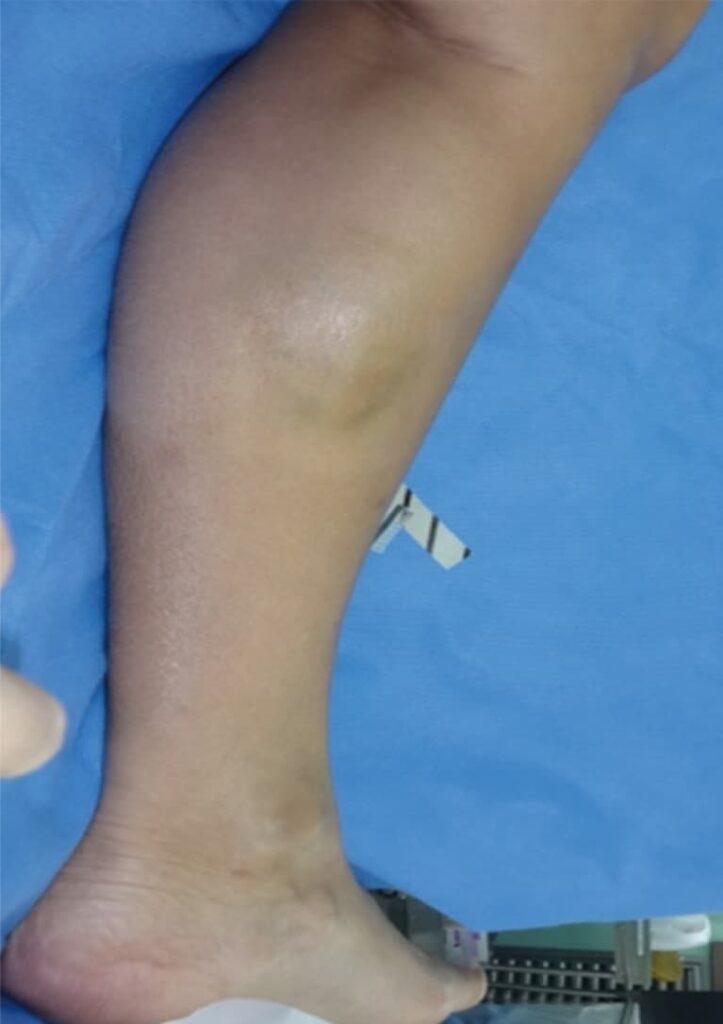
What Is The Healing Process For Calf Implants?
Calf implant surgery may have a downtime of 2 weeks, and you might feel the need to have some assistance when walking a few days after the surgery. You may likely have the compression bandages on for a couple of weeks post-op.
It’s likely that your doctor may advise you to keep your legs elevated, but some advise walking after a certain period of time to promote the circulation of blood and healing. Aftercare instructions can vary between patients depending on their needs, so make sure you consult your doctor about this.
During recovery, you might experience temporary side effects, such as swelling, soreness, redness and bruising, but it should get better with time. You might be prescribed antibiotics as well to reduce the risk of an infection after surgery. Drinks like alcohol would probably have to be avoided for several weeks after surgery as well.
Standing for a long period of time and gym might also be off the table for around 3-4 weeks. However, for more strenuous physical sports, like skiing or cycling, you might be advised to wait for 2 months. Again, you need to wait for your surgeon’s go-ahead on this.

As far as the answer to when can I see the final results of my calf implant surgery goes, you’ll notice a difference immediately, but the swelling can take a few months to subside, after which you’ll be able to see them. Overall, the calf implant recovery time may vary between patients.
How Much Do Calf Implants Cost?
In the UK, calf implants might cost you somewhere between £6,000 to £10,000. However, the prices can largely vary depending on the type of implant you’re getting. Custom-made implants are more expensive, with just one of them costing around £12,000-£13,000.
The pair of them, however, might be between £16,000 to £17,000. Some patients also need more than one implant per leg to achieve their desired results, so the cost can add up there as well. Additionally, the calf implant cost can depend on:
- Whether you’re getting general or local anaesthesia
- How experienced and qualified your surgeon is
- Where their clinic is located
Calf implant surgery is mainly considered a cosmetic treatment, so it’s unlikely you’d be able to get it on the NHS or have it covered by insurance. Still, you should make sure to ask either for eligibility.
Conclusion
Calf implant surgery can help many people achieve their desired leg contour. These devices are also permanent, so you can enjoy the results for a lifetime. Both calf implants in men and calf implants in women are done, but you should make sure to check the results that the patients have achieved from a surgeon you’re considering. It may give you an idea of the kind of results they can achieve.
In general, calf implants are considered a safe surgery, although it’s extremely important that you find an experienced and qualified surgeon who knows what they’re doing. Even so, the surgery carries certain risks which you must talk to your surgeon about beforehand.
Reviewed and approved by Prof. Dr. Fuat Yuksel
FAQ
Are calf implants safe?
Calf implant surgery is generally considered safe, but it’s essential that you find a qualified and experienced surgeon. Even then, the surgery can carry certain risks, such as hematoma, seroma, capsular contracture, nerve injury, scarring, asymmetry, rejection of the implant, rupture, misplacement, etc. Make sure you discuss these thoroughly with your surgeon.
How durable are calf implants?
Calf implants are supposed to be lifetime devices, so they should be quite durable under pressure. Still, they can rupture.
Can I do sports with calf implants?
You can play sports with calf implants, although not immediately after the surgery. Since recovery will take some time, you might be advised to wait for 2 months before you can resume physical sports. In any case, make sure to consult your surgeon first.
Can calf implants be removed?
Calf implants can be removed, however, it’s not always so simple, especially if you’ve developed a complication. Even in this case, you must do your research to find a trained and experienced surgeon.
